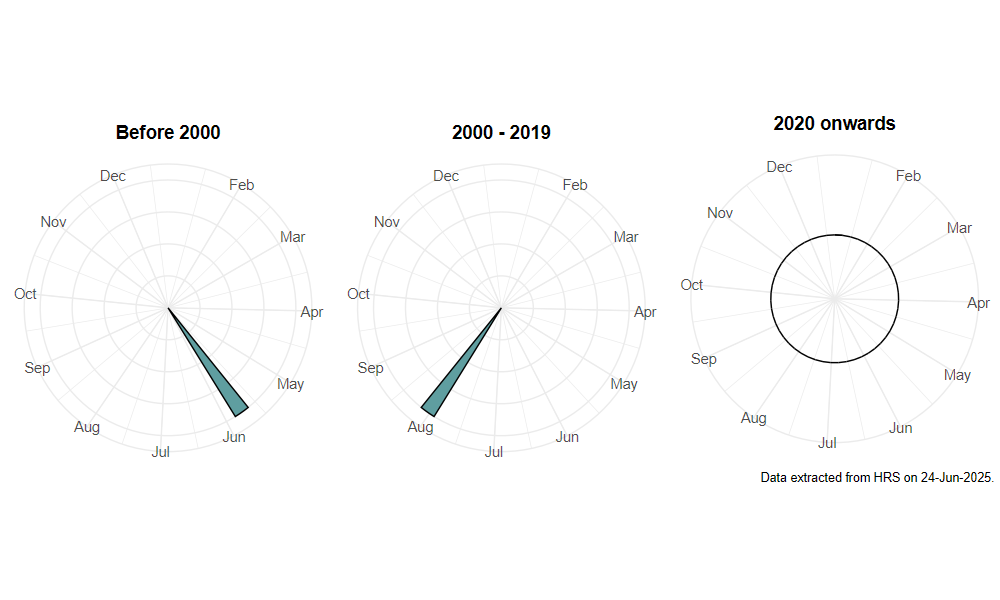Cheilosia species B sensu Stubbs & Falk (1983)
Identification
Identification difficulty = 5. ![]()
![]() according to Ball & Morris, 20241
according to Ball & Morris, 20241
Synonymy
The identity of Cheilosia species B is uncertain, but is thought to be either C. gigantea Zetterstedt, 1838 or the recently separated and little known C. ingerae Nielsen & Claussen, 2001. This cannot be resolved unless more specimens are found.
Biology
The larval food plants of the most likely contender for Cheilosia species B, C. gigantea, are Northern Dock Rumex longifolius and Scottish Dock Rumex aquaticus, both of which have highly restricted distributions in Scotland and northern England.
Flight period
The following plots show the number of unique records per week excluding those reported to be of immature stages.

Status
DATA DEFICIENT - Ball & Morris, 20142. Endangered (RDB1) - Falk, 19913. Rare (RDB3) - Shirt, 19874.
Distribution
There is only one record of a single male found by Iain MacGowan on the banks of the River Dee near Ballater in the central Highlands of Scotland on 30/05/1981.

-
Ball, S., & Morris, R. (2024). Hoverflies of Britain and Ireland. WILDGuides (3rd ed.). Oxford: Princeton University Press. ↩
-
Ball, S., & Morris, R. (2014). A review of the scarce and threatened flies of Great Britain. Part 6: Syrphidae. ( No. 9). Species status (pp. 1–130). Peterborough: JNCC. ↩
-
Falk, S. (1991). A review of the scarce and threatened flies of Great Britain. ( No. 39). Research and Survey in Nature Conservation (pp. 1–194). Peterborough: NCC. ↩
-
Shirt, D. (Ed.). (1987). Red Data Books: 2. Insects. Peterborough: NCC. ↩